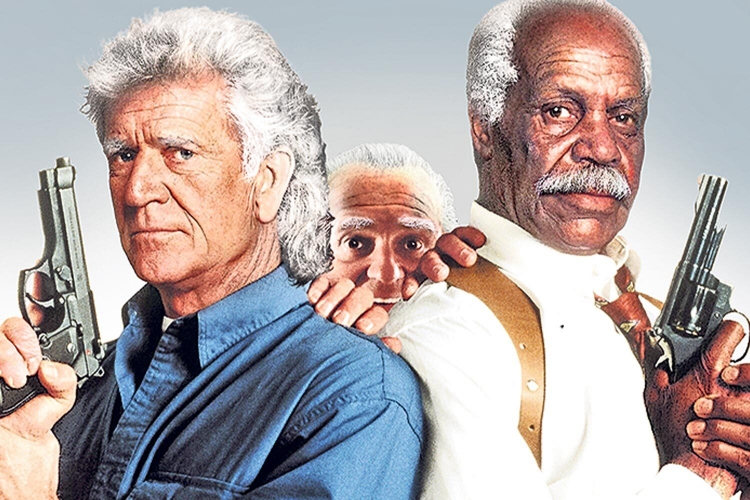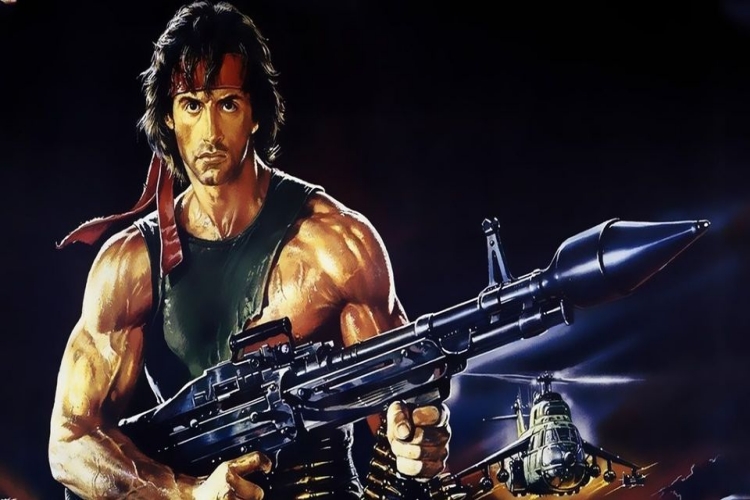5 Sequels that Changed Everything and Worked - Mostly
Jack 'The Cynic' Atkinson and Seth 'The Pragmatist' Godwynn
When a movie does well, in terms of making shit-loads of money, a sequel is practically guaranteed. In fact, these days, movies are generally made with the prerequisite of developing at least one sequel, possibly a franchise, and if they’re very lucky, an entire shared cinematic universe where they can just continue to print money until politics takes over and the end result is unwatchable garbage.
We’re looking at you, Disney!
But sometimes the sequel has very little in common with the original movie it’s looking to cash in on. Often that’s because the second film is generally made on a lower budget, or with a tighter strangle-hold on creativity. The mentality behind that ‘thinking’ being that the reputation and goodwill developed by the first is enough to guarantee some degree of success.
Other times, the sequel is made by somebody who had no idea what made the original movie great. Movies like City Slickers had a surface narrative of three guys herding cattle poorly with hilarious results, but there was a much deeper subtext about dealing with a midlife crisis, the feeling of ‘I’m getting old’ that middle-aged audiences could relate to. They risked their life to save a calf that was being washed away, and we understood why it was important, even if we couldn’t explain why. The sequel threw all that feely stuff in the bin and amped up the cattle related hijinks 150% because that’s what audiences really want in some bizarro world reality that is inhabited entirely by Hollywood executives.
But, most often, it’s because of the idiocy of focus groups and cocaine-riddled executive minds who see something perfect and figure they can just make it a little better.
This usually ends up going about as well as a bar mitzvah held in a sausage factory. But sometimes, just sometimes, it turns out that you can change everything that made something great and still not completely ruin it.
Here are 5 times where significant changes didn’t completely derail a franchise.
Lethal Weapon
The first Lethal Weapon was a great movie, blending 80s tongue-in-cheek action with an earnest sense of danger. Riggs was portrayed as a man with a gun to his own temple and Murtaugh as a man driven by his own, often regrettable, sense of loyalty. There was a certain sincerity about it all as they fought their way through the symbols of their own darkest fears.
Riggs eventually pushes his way past the ghosts of his past, coming out the other side as being slightly more reluctant to ‘blow the back of his head clean off,’ while Murtaugh learns to accept that his job is a significant part of who he is.
The tone was dark, even with the saccharine glare of the era, colours so bright that you strongly suspected you might be having a stroke.
But then came the sequel. Suddenly Riggs had given up smoking, he was essentially living in his partner’s house—a bit like a puppy, and was learning to wear big-boy pants without making a mess. He had been thoroughly sanitised, a new comedic edge had been added, and the tone had been softened down to appear much more audience friendly.
And this was how things progressed: the adult themes were toned-down and they substituted unapologetic violence for cheap laughs. This established the format of all future films.
Lethal Weapon 3 followed along with the corresponding decline in terms of quality and tone, but, the series successfully abandoned everything about the first movie that made it a little bit different and just tried really hard to be a lower budget version of Die Hard, while Die Hard tried to be an even lower budget version of itself. By Lethal Weapon 4, it wasn’t even pretending to be worth watching.

Raiders of the Lost Ark
The first Indiana Jones movie established itself as an adult film, where punches to the face would actually hurt and gunshots had lethal consequences. It’s a darkly-toned yet fun, thinking-man’s action film, but the sequels effectively stripped all that way.
The sequel (though chronologically, technically a prequel), ‘Indiana Jones and the Temple of Doom’ ramped up the comedy, softened the main character and made the whole thing more suitable for a family audience.
This was followed up with ‘Indiana Jones and the Last Crusade’ where the budget seemed to slip, the tone began to further degrade and the end product just looked awkward enough to end the franchise—at least temporarily.
Then a fourth film came out, made when Harrison Ford was old enough that the only way to tell the story was to pass on the torch to a younger man. So much time had slipped by that the film didn’t know what it was trying to be, but the tone took the slapstick comedy of the sequels and ramped it up even further.
Indiana Jones went from being a tough, no-nonsense character driven by a burning need to find the truth, to a somewhat awkward one, driven by a ferocious ambition to fill cinema seats.
You could argue that this didn’t work, since by the end of the third film, the franchise was hopelessly out of steam and I wouldn’t try to debate you.

Star Trek
This is going to be a ‘hot-take’ but Star Trek was a strong and successful franchise, until it got the J.J. treatment. But, in any case, the first movie established a very different look and tone, which was quickly shrugged off, leading the films to move on to bigger and better things.
The Motion Picture is a firm favourite of almost nobody. Most people maintain that it was the second film, ‘The Wrath of Khan’ that established the eventually successful Trek cinematic formula.
But, the original film has a lot going for it and has aged surprisingly well. It had a slow, philosophical tone with little action and a long, drawn-out plot that quietly built tension throughout. The style of the ship, uniforms and behaviour of the crew were a radical departure from anything we’d seen before on the original series, and we didn’t see that staid, serious tone again until ‘The Next Generation’ arrived on television.
The show had a more grounded, militaristic ambience with the crew painted more as a regimented team, regulated by a more rigid set of rules than before. They had previously felt like explorers and very much a product of their time; now they felt like someone was taking it all far more seriously.
Even if you disliked the original movie, there’s no arguing that it was enough of a critical and commercial success to build the cinematic franchise on. It also set a lot of the tone for the development of all future television shows.
The Wrath of Khan was a very different movie, which indisputably felt like a more in-keeping continuation of the original series. Many people liked the style of the Motion Picture, and many people agree that as they mature, they come to appreciate it more. It was more inspired by Kubrick’s 2001 than by Star Wars, and most definitely established a unique identity against everything else that was trying to cash in on the new craze.
Later movies absolutely did a better job of continuing the legacy of the original Trek television show, while The Motion Picture, somewhat ironically, did a better job of bridging the 1960s show to the later incarnations.
If the films had continued in this tone, I would have been OK with it.

First Blood
When Rambo arrived on the cinema screen, it was in the movie, First Blood. The title of the film was later dropped, and the series continued simply with the name, ‘Rambo.’
His first outing was a serious and reasonably intelligent film about a Vietnam Vet being treated horrendously until he finally snapped. It was a film made for people who don’t have to ask permission to use scissors, with a strong adult tone throughout.
Later incarnations shrugged all that off and turned Rambo into a muscle-bound superhero with the same level of realism as just about any political promise made in the last two centuries.
The films were certainly not made more family-friendly to draw in a wider slice of the audience. In fact the later movies were essentially cheap bloodfests of ridiculous over-the-top violence. They were designed for a completely different audience, inviting the question of why they even bothered using the character’s name.
This was a different take on getting ‘bums in seats,’ where the serious and sensible movie was sacrificed on the altar of corporate greed and rose again, like the phoenix of legend, as a complete piece of crap… that made money.

Star Wars
The first Star Wars movie—and I’m old enough to remember it just being called that, and not ‘Episode IV: A New Hope,’ was a film that changed cinema forever. But, it came as a surprise to everyone, as nobody working on it believed they were doing something that would so completely capture the imagination of the audience. Cast and crew have stated quite explicitly that they thought it was a load of old crap, and Lucas had a job getting them to take it seriously.
By the time ‘The Empire Strikes Back’ was in production, there was a new confidence in what they were doing, and this added polish to the script, more competent direction and a subtle, but not insignificant shift in tone.
While Star Wars opened the door to a galaxy far, far away, it was The Empire Strikes Back that ushered us inside the story.
Luke shifts from a lost farmboy to a strong young man, discovering his path forwards, and the truth about where it leads from. George Lucas even went so far as naming this character after himself, and projects his ideals on him a great deal. The change from an idealistic but confused young man to a serious player in galactic affairs with growing belief in his powers is not accidental.
Han starts out with the same selfless heroism he ends up with in the previous movie, reminding us he’s really a good guy under all that bluff and bravado. We get a deeper look under the hood, fleshing him out from a two dimensional stock character brought to life only by the competence and charisma of the actor, to become a fully realised person in the minds of the audience. The Princess is now a military leader, a person of importance where she seemed more like just a figurehead before.
Vader is no longer just an icon of evil: we now see depths and nuance as his backstory begins to intertwine with the lives of our heroes.
We discover plot-lines that were never hinted at before, and the tone accordingly darkens from a fairy-story in space to a desperate struggle to keep alive the morality and beliefs of a few good people.
The tone established in ‘Empire’ is carried on forwards, setting the standard for the final film in the iconic trilogy.
Reading through the expanded material such as novelisations of the movie, it’s clear that Vader was not yet established as anything more than a dark villain and the first movie was designed to stand alone —nobody expected a better fate for it.
Where other movies suffer from a shift in tone towards the light-hearted, to attract a wider audience, Star Wars allowed its success to take it in a stronger narrative direction, confounding the usual formula. A flicker of unexpected success generally leaves studios demanding a sequel, but on terms that cripple the creative process. Star Wars was fortunate enough to see the opposite of that, with the success of the first inspiring the filmmakers to push the boundaries further in the direction the creativity demanded.
It’s a rare thing!

All too often we see creativity give way to greed. We see people who are only looking for more money in control of our entertainment, and the quality almost always suffers. Adult storytelling is usually peeled away to be replaced with something more easy to sell.
Art is not, and never should be just a product. Creativity drives innovation, stories and films are meant to inspire the best in us and it’s for that reason that a measure of the health of a society is the way it treats its art.
There are rare examples of when movies have managed to become better, more adult and smarter as sequels progress, but generally the law of diminishing returns applies. For every Star Wars, there is a Terminator, a Robocop, a Halloween, Jaws, Nightmare on Elm Street, Die Hard, Batman and Fast and Furious.
It will continue for as long as we let it.
Many thanks for reading this article. We hope it was interesting, informative and entertaining. Follow us on social media or share our content on your own pages. It helps us grow so we can create more free content for you.


“Raiders of the lost Arc”. Arc???? Was Indy searching for a lost Tesla coil? Its ARK, you numskulls.
Now that you mention it, my skull does feel pretty numb…